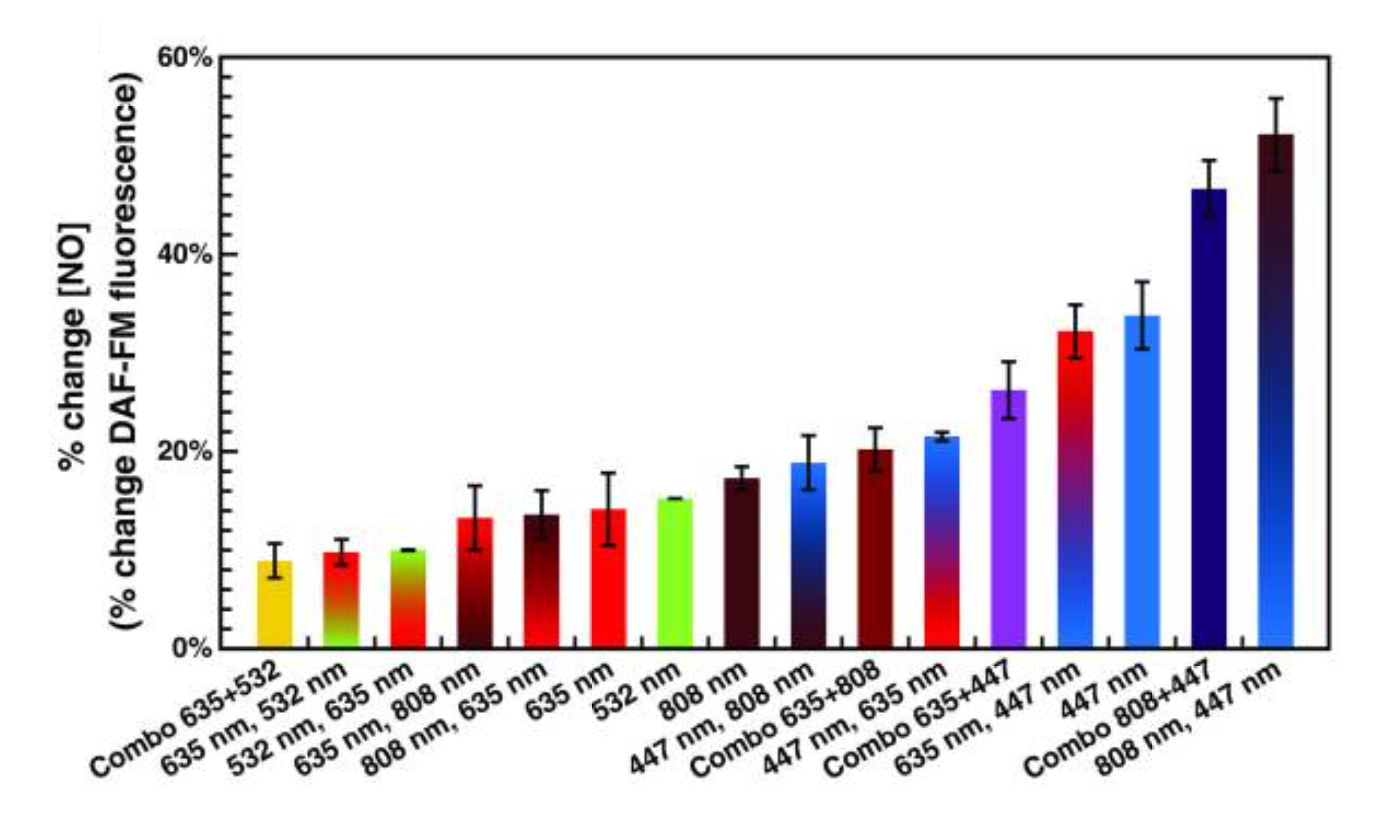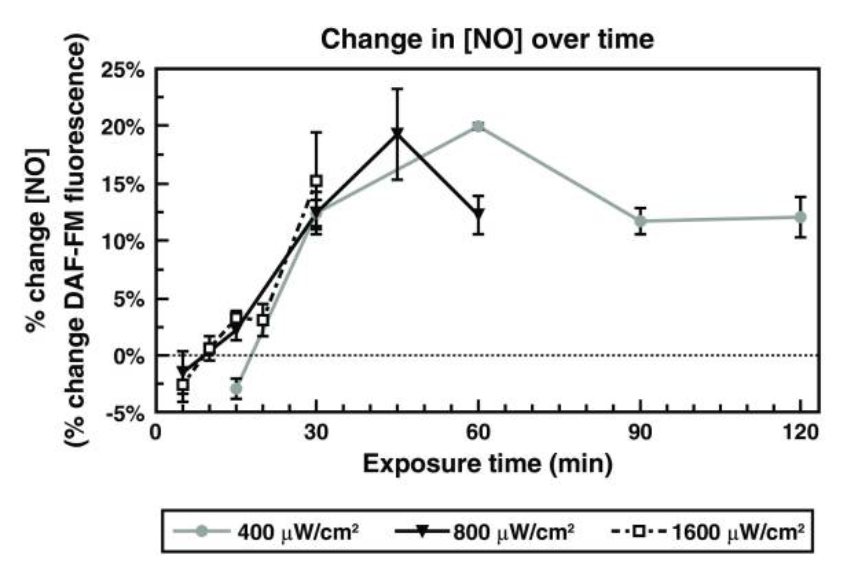The effect of different wavelengths and their combination on intracellular nitric oxide
-
Wavelength- and irradiance-dependent changes in intracellular nitric oxide level
"Due to NO being an extremely potent signaling molecule,[50–52] we have conducted an in-depth in vitro analysis of NO levels and potential downstream effects following exposure to one or more wavelengths of light."
Exposures were:
- Individual: single wavelength
- Serial: wavelength 1 (top of bar) followed by wavelength 2 (bottom of bar)
- Simultaneous (combo): wavelength 1 with wavelength 2

"[..]various wavelengths of light potentially modulate NO levels by different mechanisms, and likely different chromophores. Specifically, although red and green individually resulted in the same overall percent increase in NO levels, one was not necessarily capable of substituting for the other. This implies that a full dose of red or green is required for a maximum effect, and that they operate by different mechanisms to drive NO release or production. It is possible that some of these results, particularly the apparent interference of 635 and 532 nm, could be due to different biphasic dose–responses relative to irradiance. If this were the case, two simultaneous exposures at 400±8.9 μW/cm2 would not necessarily be expected to add up to one exposure of 800±17.9 μW/cm2. However, given this effect was also observed in the split green–red and red–green exposures, and 1.44±0.03 J/cm2 was observed to result in half of the NO release of 2.88±0.06 J/cm2 with individual wavelength [
Fig. 2(a)], the lack of interchangeability remains surprising.""Even more striking, NIR and blue seem to complement each other when exposed simultaneously, and NIR exposure seems to potentiate the effect of a subsequent blue exposure. Thus, it would seem that to enhance a blue exposure, an NIR wavelength must be present at the beginning of the overall exposure duration. In contrast, blue does not have the same effect on a subsequent NIR exposure, which provides further evidence that different wavelengths are functioning by different mechanisms and chromophores."
"An additional byproduct of this analysis is that we have demonstrated that endogenous NO levels can be modulated in finely tuned 2% to 5% increments between 10% and 50% above baseline, utilizing exposures of different combinations of wavelengths [Fig. 4(e)]. Statistically, all of these wavelength combinations produce significantly higher levels of DAF-FM fluoresce relative to their unexposed controls. This will potentially enable novel NO-dose–response experiments to be conducted, notably without the use of NO-donor molecules, which are often light sensitive and thus particularly unsuited for probing mechanisms of PBM.[70]"
Those were 'immediate postexposure percent changes'. Over time it went as follows:

"Our focus here was on the 635-nm red exposures because, even though 447-nm light induced more NO in our cells, the red light is more representative of traditional PBM exposures."
"[..]with all examined irradiances, 50% or more of the total increase occurs between 15 and 30 min of the exposure, and there is no significant change in NO levels before this point. This suggests that there may be an irradiance-independent delay before NO increases are observed."
-
@Amazoniac good thread. What about infrared incandescent?
-
The greatest effects came from variations that included blue light (on the right side) and it would be minimal with heat lamps.
Ultraviolent light also affects nitric oxide levels. Based on what's shown above, the typical durations recommended for sunlight exposure would fall within the length needed to level out the effect from red light.
Red or infrared before blue light didn't lessen the impact of blue in isolation, but afterwards they did. It's only helpful that exposing the skin to longer wavelengths before ultraviolence can minimize damage: